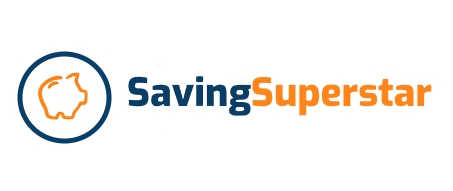Being in debt can feel like you’re constantly treading water—paying just enough to stay afloat but never making real progress.
If you’re struggling with multiple debts, a Debt Management Plan (DMP) can help you get back in control.
While there are charities and organisations that offer free DMPs (which are definitely worth considering), you can also create your own.
A self-managed plan puts you in charge and can be a good option if you feel confident speaking to creditors directly.
This guide will show you exactly how to create a DIY debt management plan—from understanding your debt to negotiating repayments.
What is a Debt Management Plan?
A Debt Management Plan is a formal arrangement between you and your creditors to repay your unsecured debts in a way that’s affordable for you.
A DIY DMP is informal but designed to achieve the same goals.
You usually make one regular payment each month, which is split across your debts.
DMPs don’t include priority debts like rent, council tax, or energy bills. Your own DMP shouldn’t either.
They’re mainly used for non-priority debts such as:
- Credit cards
- Store cards
- Personal loans
- Overdrafts
- Catalogue debts
- Payday loans
If you’re overwhelmed but still have some income to spare after essentials, a DMP can help.
It can reduce pressure without turning to insolvency options like bankruptcy or IVA.
When is a DIY DMP a good idea?
A self-managed DMP is worth considering if:
- You have unsecured debts you can no longer afford at current repayments
- You have some money left each month after covering essentials
- You feel confident dealing with creditors yourself
- You want to avoid third-party providers (some of which charge fees)
It’s not a legal agreement, and creditors don’t have to accept your offers. But many will if you show that you’re acting reasonably and consistently.
If you’re not comfortable doing it yourself, a more formal debt management plan may be better.
Step 1: Get a full picture of your finances
Before you do anything, you need to understand your situation in black and white.
This means working out:
- How much you owe
- What your income is
- What your essential spending looks like
Start by listing all your unsecured debts:
- Who do you owe?
- How much is outstanding?
- What’s the monthly minimum payment?
- What’s the interest rate?
Then, calculate your monthly income from all sources:
- Wages or pensions
- Benefits (e.g. Universal Credit, PIP, Child Benefit)
- Any other income (rental, part-time work, etc.)
Now list your essential expenses, including:
- Rent or mortgage
- Council tax
- Utilities (gas, electricity, water)
- Food and essentials
- Travel to work
- Insurance (home, car)
- Prescriptions or health costs
- Childcare or caring responsibilities
Be honest. Underestimating living costs might make creditors happy short term but can cause more problems later.
Step 2: Work out your disposable income
Your disposable income is what’s left after essential expenses. This is the amount you can realistically put towards debt repayments each month.
Here’s how to calculate it:
Monthly income – essential spending = disposable income
If this number is zero or negative, you may need to seek free debt advice instead of setting up your own debt management plan.
Start with StepChange, National Debtline, or Citizens Advice.
If you have a small surplus—say, £50 to £300 a month—you can begin building your plan.
Step 3: Divide your payments fairly across debts
Now, take your total disposable income and split it across your debts in fair proportions.
This is usually done based on how much you owe to each creditor.
For example:
- You owe £3,000 total (split between 3 debts)
- Your monthly surplus is £150
- One creditor is owed £1,500, another £1,000, and the last £500
You could split your payments proportionally:
- Creditor A (50% of total debt) = £75/month
- Creditor B (33%) = £50/month
- Creditor C (17%) = £25/month
This approach should be seen as fair and is likely to be accepted. No guarantees though!
Step 4: Contact your creditors
Now comes the part many people fear, talking to creditors.
But remember, you’re not asking for a handout.
You’re showing that you’re trying to repay your debts responsibly, just at a pace you can afford.
When you contact creditors:
- Be polite and explain your situation
- Say you’ve created a budget and can’t afford current repayments
- Offer your proposed monthly payment (as calculated above)
- Ask them to freeze interest and charges while you’re on this plan
You can do this by phone, letter, or email. Written communication gives you a paper trail, which is often useful.
If you’d prefer, use a sample letter template from National Debtline or StepChange.
I’ll include two letter templates at the end of the post, just in case.
After you contact them:
- Keep a record of what each creditor agrees to
- Keep making payments as promised, even if they don’t reply right away
- If they refuse, continue making the affordable payment anyway as it shows good faith
Step 5: Open a separate account (optional but helpful)
If your bank is also one of your creditors (e.g. you owe them on a credit card or overdraft), they might take payments automatically through something called “set-off.”
To avoid this, consider opening a basic bank account with a different provider, where you don’t owe any money.
Use that to receive income and make payments safely.
Compare basic accounts on MoneyHelper.
Step 6: Stick to the plan and review it regularly
Once your plan is in place, the most important thing is to keep going even if progress feels slow.
Many people find that once interest is frozen and payments are regular, debts reduce steadily over time.
Each month:
- Pay the agreed amount to each creditor
- Track your balances to see progress
- Keep your budget up to date (review every 3–6 months)
If your situation changes, adjust your plan and inform your creditors. Most will work with you if you’re transparent and consistent.
Step 7: Be aware of your rights and protections
A DIY debt management plan is informal, but you still have rights.
Creditors can still contact you or take action, but most won’t, as long as you’re making regular payments.
Still, it’s important to know:
- Your credit score may be affected (but if you’re already in arrears, this likely happened already)
- Creditors may mark your account as “arrangement to pay”
- You’re entitled to fair treatment under FCA rules
If creditors act aggressively, seek help from Citizens Advice or the Financial Ombudsman Service.
Step 8: Don’t ignore priority debts
This is worth repeating: DMPs only cover non-priority debts. It’s the same for formal and informal arrangements.
If you’re behind on:
- Rent or mortgage
- Council tax
- Energy bills
- Magistrates’ court fines
- Child maintenance
You must deal with these separately and urgently.
Contact your local council, housing provider, or energy supplier directly to set up payment plans.
Never use your DMP payment to cover these before sorting them. They carry legal consequences if ignored.
Step 9: Keep copies of everything
Self-managed DMPs require you to be organised. Plus, a paper trail can come in useful if things become difficult.
Keep a folder or digital file with:
- Your budget and repayment plan
- Copies of all letters or emails sent
- Payment confirmations
- Any agreements from creditors
This helps if there’s any confusion later and keeps you in control of your own plan.
Step 10: Celebrate progress however slow
Paying off debt on a low to moderate income takes time but every payment counts.
Every month you stick to your plan is a step towards freedom.
You don’t have to be perfect. You just need to be consistent.
Take control at your pace
Creating your own debt management plan is entirely doable.
It takes patience, a bit of paperwork, and the courage to face your numbers, but it puts you in charge of your debt.
It won’t be for everyone and that’s fine.
If you’re comfortable doing it yourself, give it a try. If you’re not, there are lots of debt charities that can help.
To recap:
- Know exactly what you owe and what you earn
- Build a realistic budget and calculate what you can afford
- Divide payments fairly across creditors
- Contact creditors directly and explain your plan
- Stick with it—and adjust if your situation changes
- Get free advice at any time if you’re unsure or feel overwhelmed
You’re not alone. Thousands of people in the UK are paying off debt this way—and many started where you are now.
DIY debt management plan letter templates
Here are two letter templates to help you with your own debt management plan.
Feel free to use, add, remove or change parts to suit your needs.
1. Initial offer letter to creditor
Use this when you’re first contacting a creditor to explain your financial situation and propose an affordable repayment.
[Your name]
[Your address]
[Postcode]
[Email address]
[Phone number (optional)]
[Date]
[Creditor’s name]
[Creditor’s address]
Dear Sir/Madam,
Re: Account Number [insert account or reference number]
I am writing to let you know that I am currently experiencing financial difficulties and am unable to maintain my current monthly payments.
I want to pay what I can afford and have prepared a personal budget to work out a fair offer for each of my creditors.
My total income is £[insert amount] per month, and after essential living expenses I have £[insert amount] left to share between my creditors.
Based on the balance I owe you, I am offering to pay £[insert amount] per month.
I would be grateful if you could accept this reduced offer and freeze interest and charges on the account to help me clear the debt more effectively.
I will continue making regular payments and keep you updated if my situation changes.
Please find enclosed a copy of my income and expenditure summary for your reference.
Thank you for your understanding.
Yours faithfully,
[Your name]
2. Follow-up letter if creditor does not respond or rejects the offer
Use this if a creditor hasn’t replied or refuses to cooperate but you’re continuing with the affordable payment.
[Your name]
[Your address]
[Postcode]
[Email address]
[Phone number (optional)]
[Date]
[Creditor’s name]
[Creditor’s address]
Dear Sir/Madam,
Re: Account Number [insert account or reference number]
I recently contacted you regarding my financial difficulties and offered to pay £[insert amount] per month towards my debt.
I have not yet received a response, or I understand that my offer has been declined.
I would like to confirm that I am still committed to paying off this debt and will continue to make the monthly payments I have offered.
I hope you will reconsider accepting the arrangement and freezing interest and charges, as this would support me in repaying the debt more quickly and fairly.
I will keep you informed of any changes in my financial situation and am happy to provide updated income and expenditure details upon request.
Thank you for your time.
Yours faithfully,
[Your name]
Tips for using these templates:
- Keep copies of all letters and emails you send
- Send letters by recorded delivery if you prefer post
- Attach your income and expenditure summary with your first letter
- Be polite, clear, and consistent. Creditors are more likely to respond well to respectful communication
- If you feel uncomfortable writing or explaining your situation, charities like StepChange or National Debtline can help

